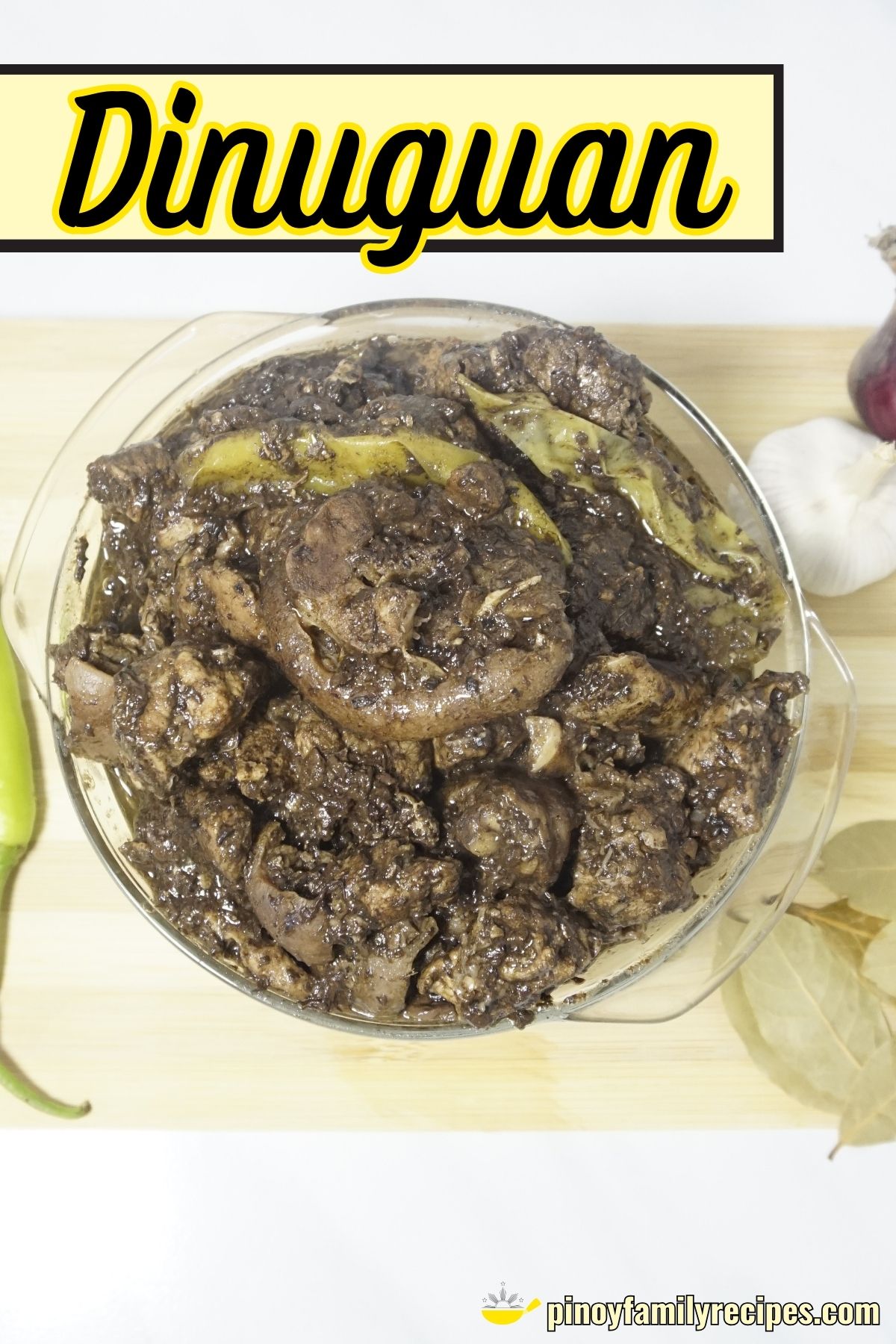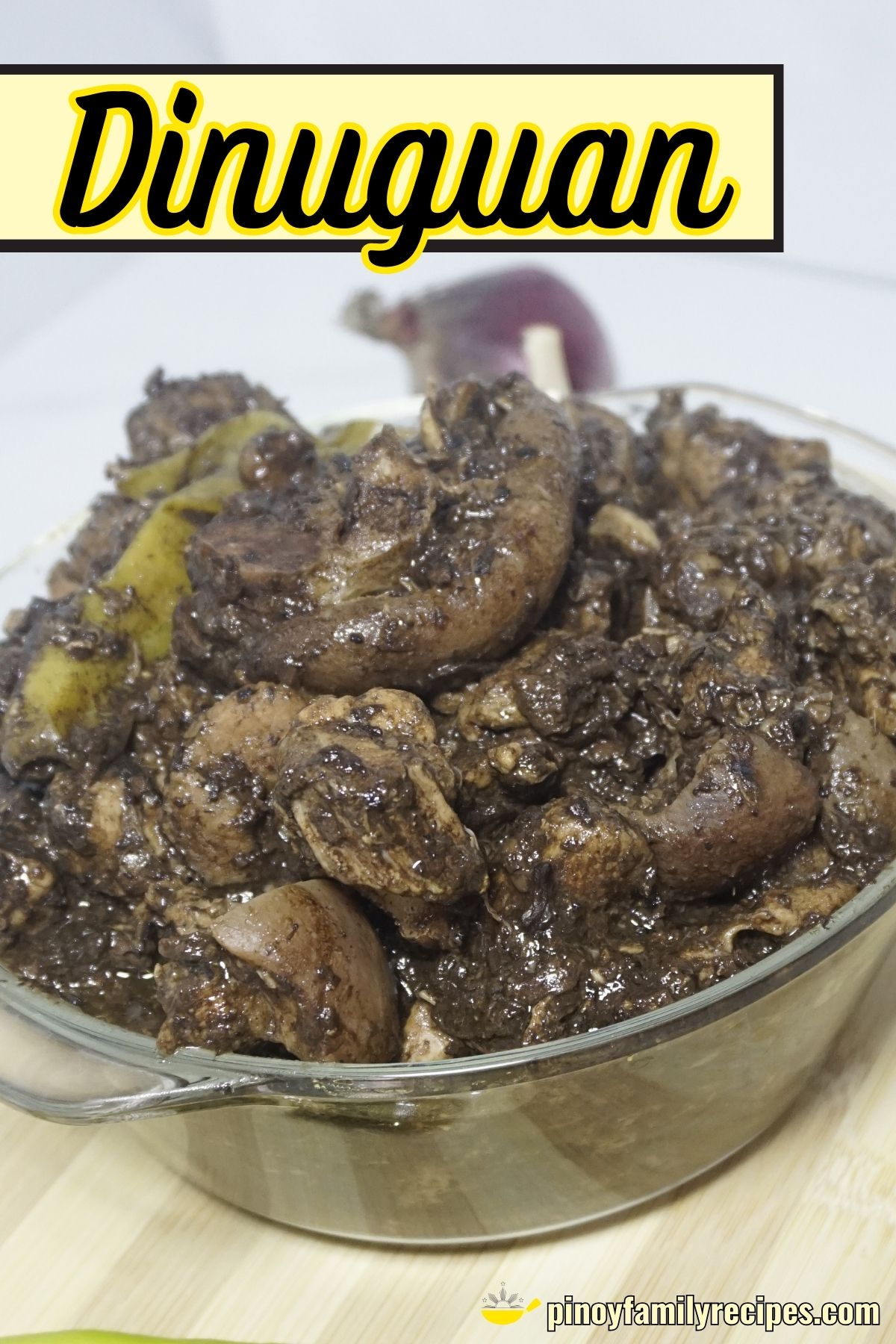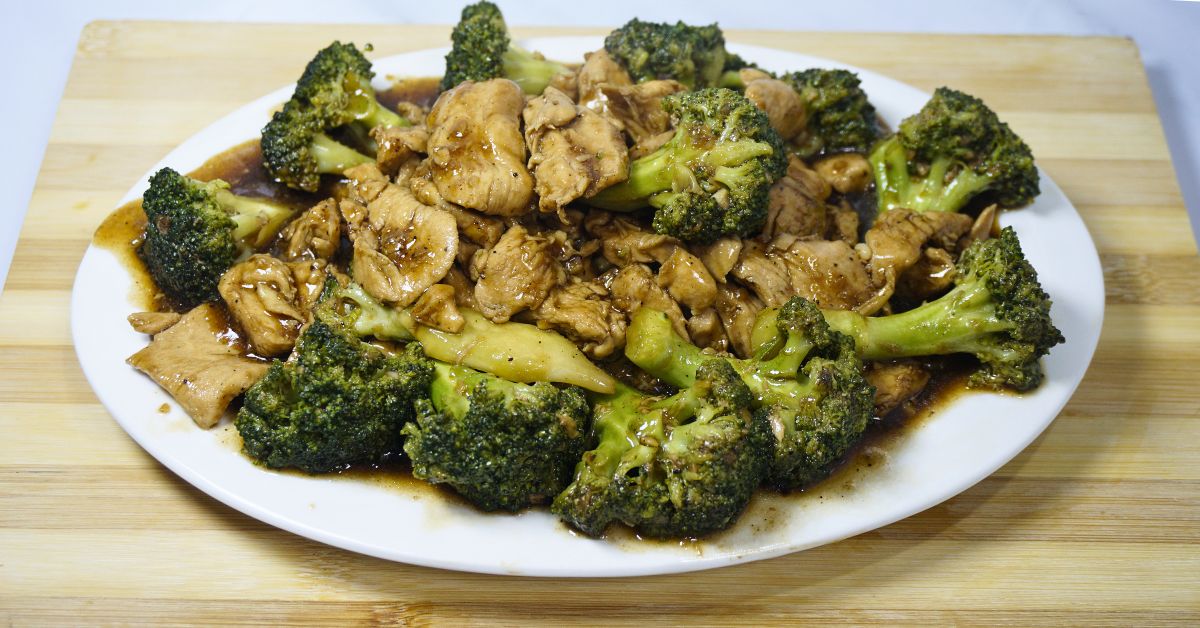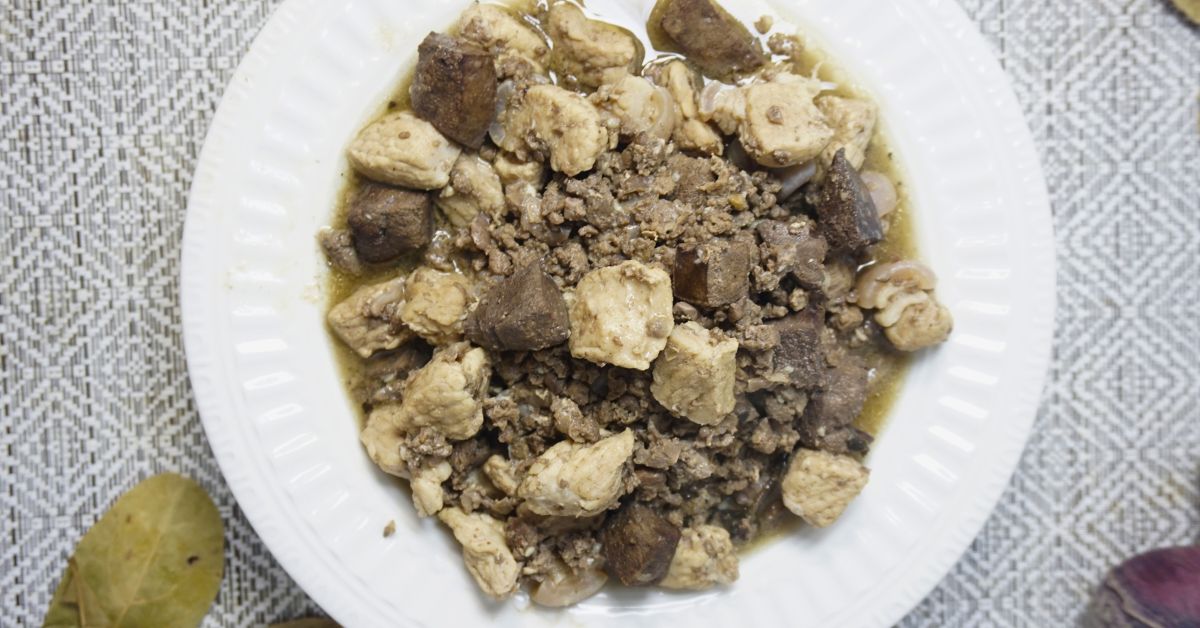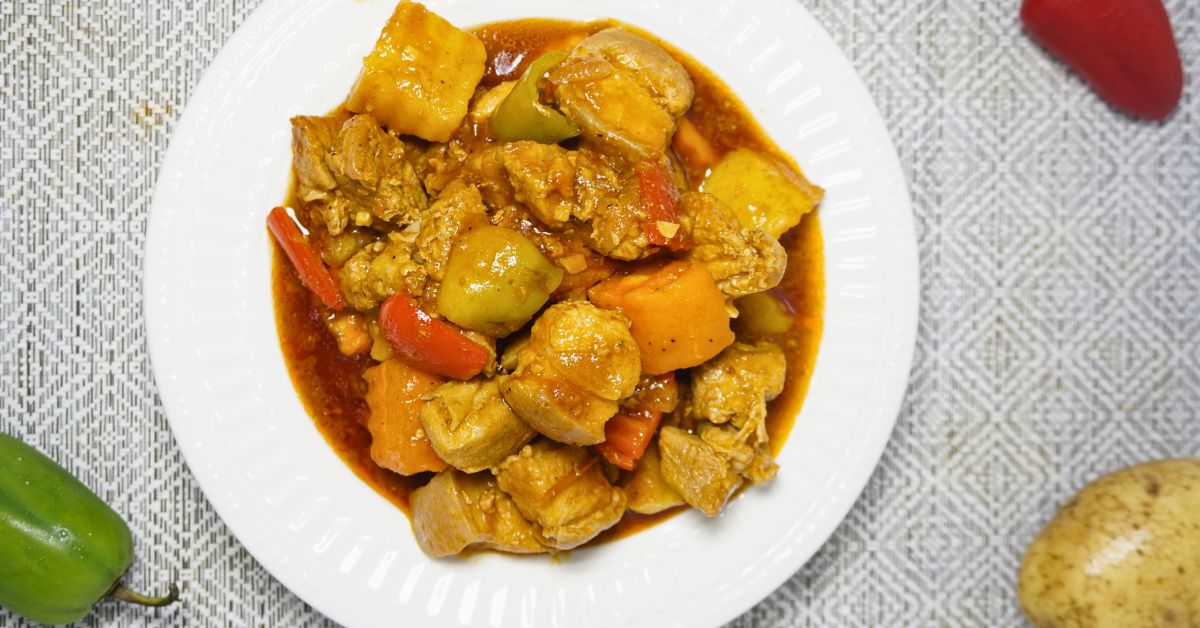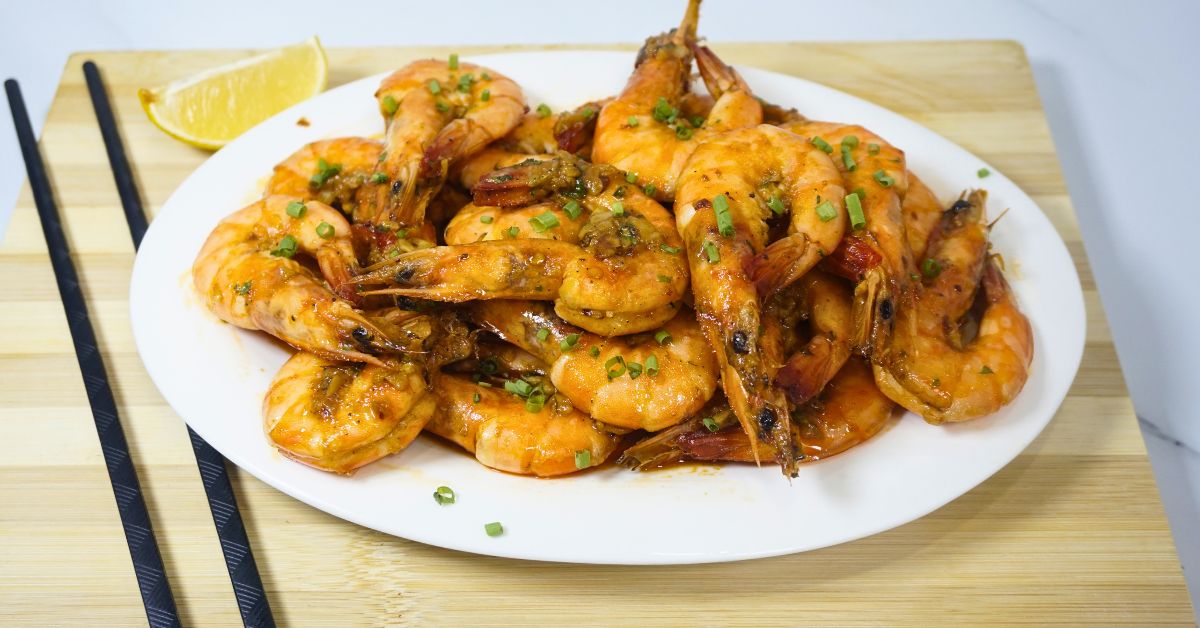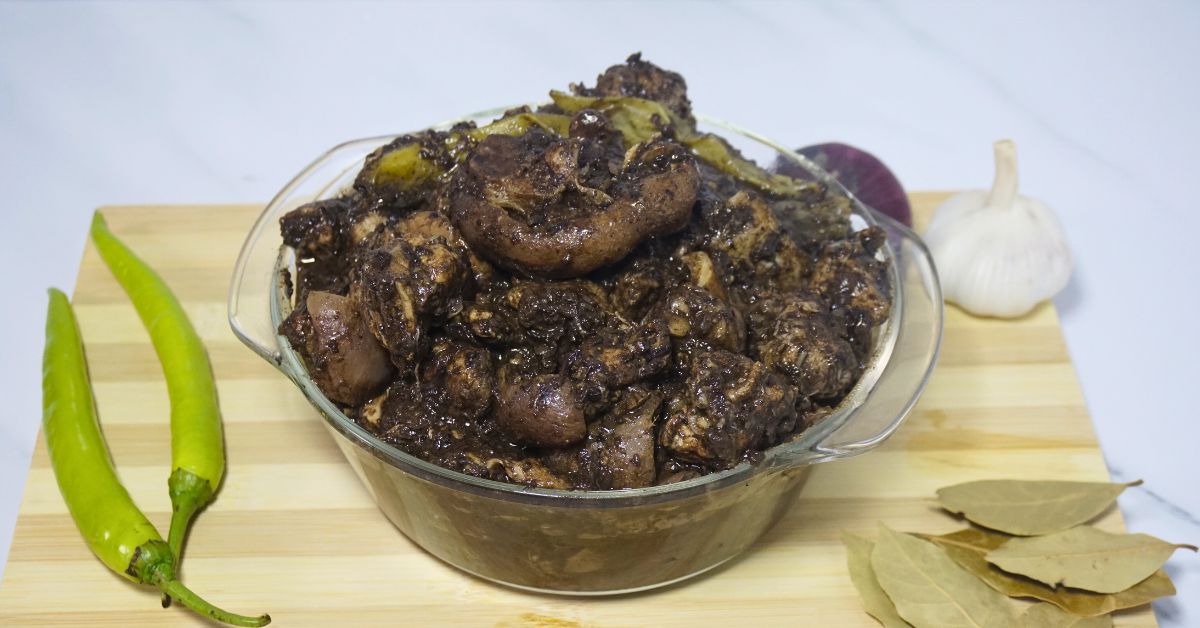
Get ready for another must-try dish straight from Kapampangan kitchens! If you’re anything like me, you probably saw this on the table growing up and weren’t sure if you wanted to try it. I get it—it looks a little different. But once you take that first bite? Boom. You’ll understand why it’s a true Pinoy classic.
Dinuguan is all about deep, savory flavors. The pork is super tender, simmered in a rich, flavorful sauce with just the right kick of spice. And when you eat it with hot rice? It hits the spot. If you’ve never tried it before, now’s the perfect time. This dish is bold, comforting, and totally worth it!
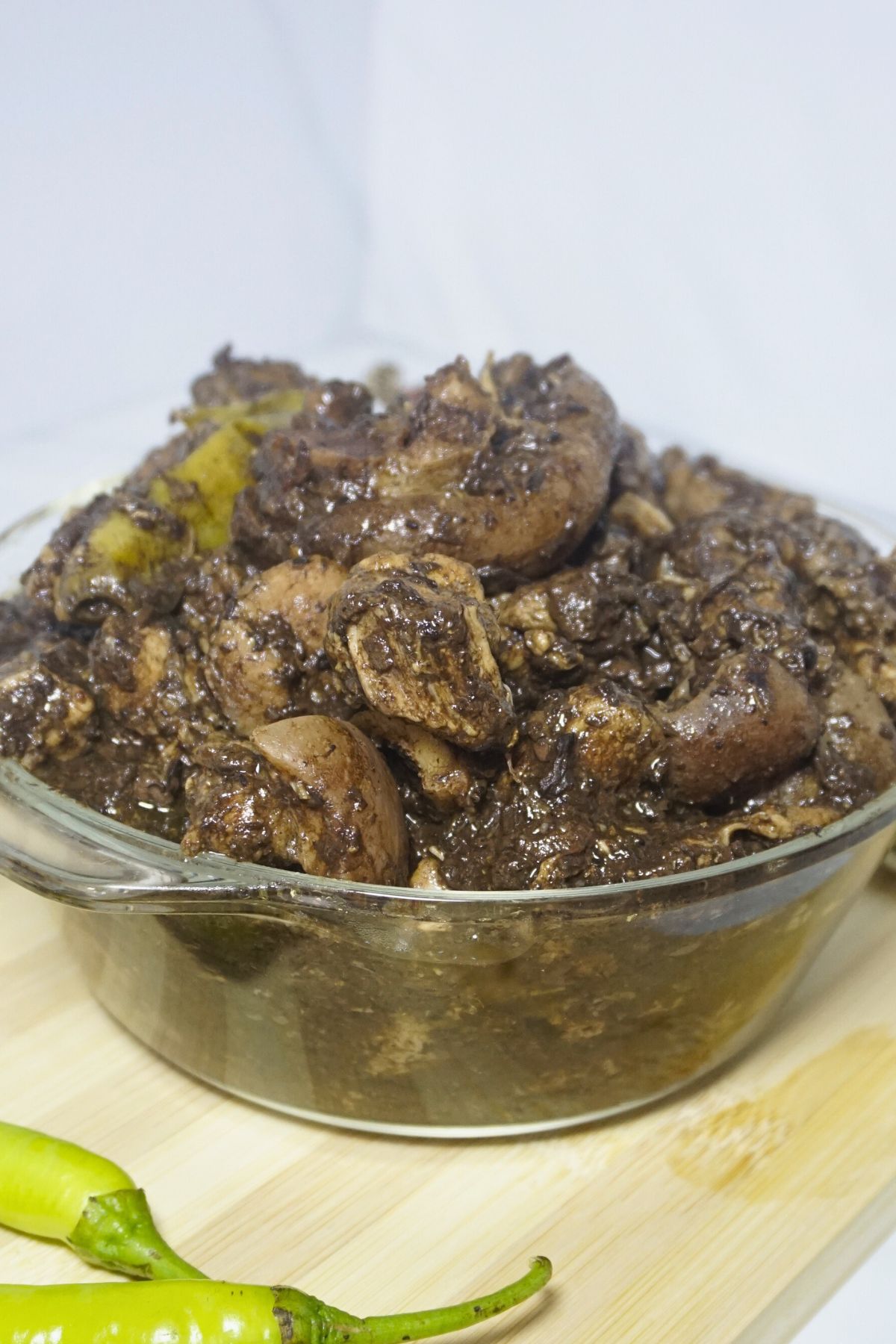
What is Dinuguan Made of?
Dinuguan is one of those bold Filipino dishes that really stands out. It’s a rich and savory stew made with pork, pork blood, and vinegar. Sounds a bit intense, I know—but don’t let that scare you off. It’s actually cooked almost like kilawin, except this version doesn’t need any internal organs, unless you want to go all out.
What makes Dinuguan so good is the mix of flavors and textures. You can use pork belly, shoulder, liver, or even intestines if you’re feeling adventurous. The vinegar gives it that nice asim, and with garlic, onions, and bay leaves, the flavor just builds up beautifully. Some people like to toss in chili peppers too for that extra heat. And of course, the pork blood is what thickens the sauce, giving it that deep color and rich, hearty taste.
It’s best served with white rice or puto—perfect for balancing out all that strong flavor with something soft and light. It might sound like an adventurous dish, but once you try it, you’ll get why it’s a Pinoy favorite.
Every time I plan to cook Dinuguan, I make sure to wake up early and head straight to the market for fresh pork blood. It’s not something you want to buy late in the day—by then, it’s usually all gone! A bit of extra effort in the morning, but once you’re sitting down with a hot plate of Dinuguan and rice.
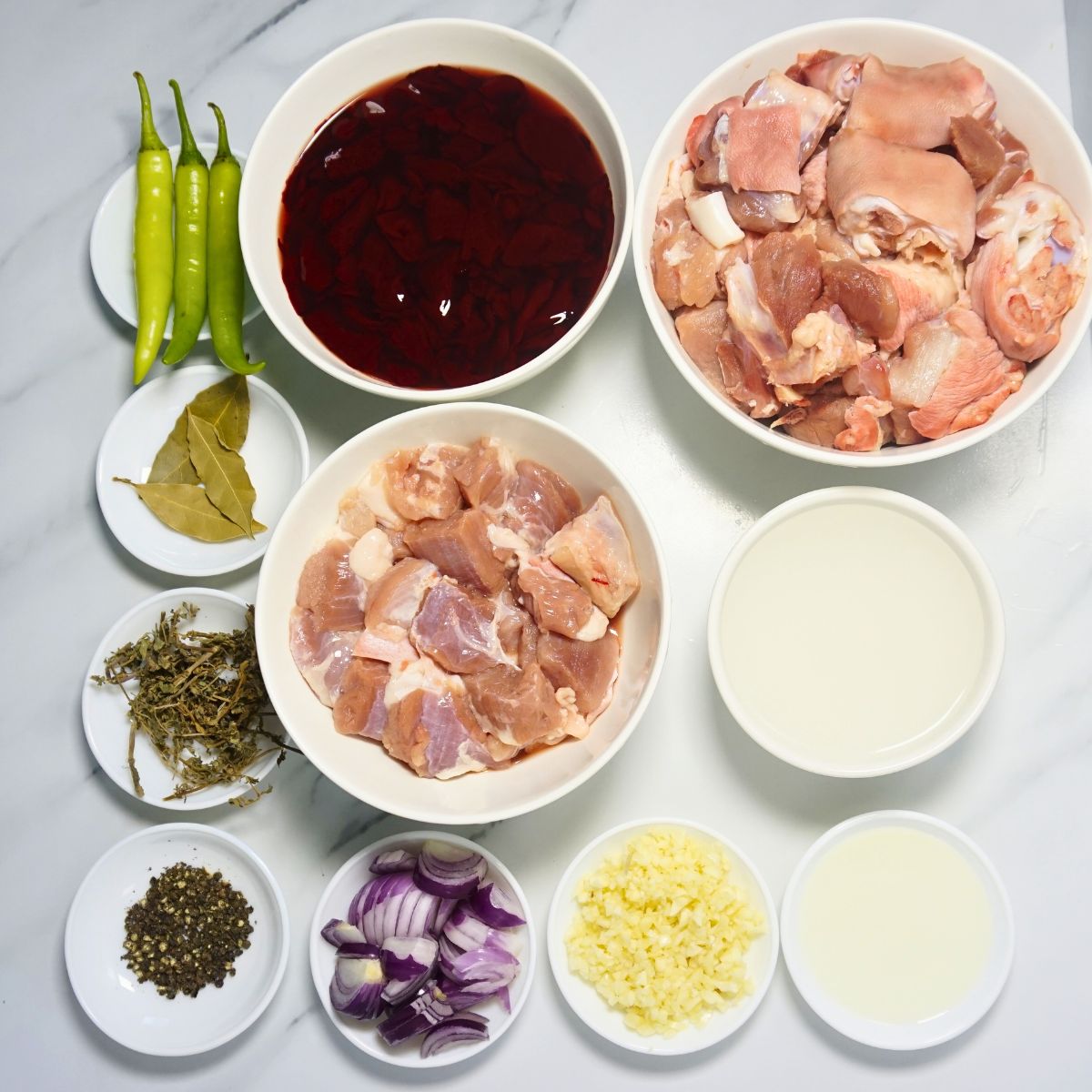
Pork Dinuguan Ingredients
Garlic and onion: These two work together to build the base flavors of the dish. Garlic adds a savory kick, while the onion brings a hint of sweetness, making sure every bite is packed with taste.
Pork hock and pork belly: The combination of pork hock (pata) and pork belly gives the dish a nice balance of textures. The hock adds a rich, gelatinous touch, while the belly brings a tender, juicy bite.
Bay leaves, dried oregano, and black pepper: These spices add an earthy and aromatic layer to the dish. The bay leaves give a subtle fragrance, the oregano adds a hint of herbal freshness, and black pepper brings a mild heat that complements everything.
Vinegar and green chilies: The vinegar brings the tangy, sharp flavor that makes Dinuguan so unique. The green chilies add a customizable spice level, giving you control over how much heat you want in the dish.
Pork blood: This is what gives Dinuguan its rich, dark sauce. The pork blood thickens the stew and adds a deep, hearty flavor, making the dish truly savory and delicious.
Salt: A simple ingredient that brings everything together, enhancing all the other flavors in the dish.
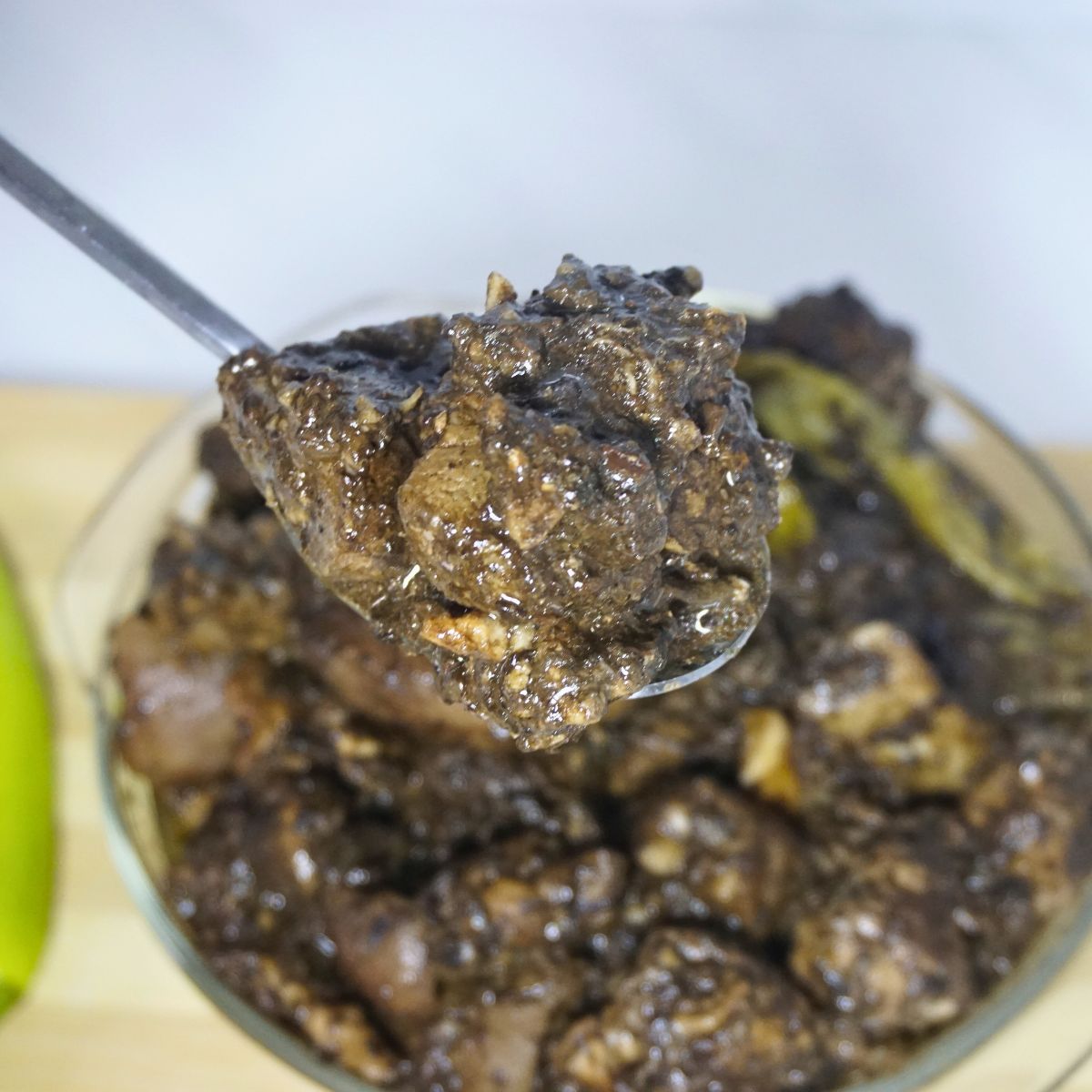
How do you clean pork blood?
Here’s how you can clean pork blood for your Dinuguan. First, pour it through a fine sieve to catch any clots or impurities. This step is key to getting a smooth sauce. If you find clots, gently mash them with a spoon or whisk, then strain again to ensure a consistent texture. A helpful tip: rinse the container with a bit of water to gather any leftover blood, but avoid adding too much water, as it can dilute the flavor. Once you’ve done this, your pork blood will be ready for cooking!
How To Cook Pork Dinuguan
Sauté the Garlic and Onion
Start by heating 2 tablespoons of cooking oil in a large pot over medium heat. Once the oil is hot, add the minced garlic and sliced onion. Keep stirring until the garlic turns golden brown and the onions become soft and translucent. This will create a nice, flavorful base for your dish.
Brown the Pork
Next, add the pork hock (pata) and cubed pork belly to the pot. Stir occasionally, allowing the pork to brown lightly on all sides. Browning the pork gives it a deeper flavor and helps create that nice, savory taste in your Dinuguan.
Add the Spices
Now, toss in the bay leaves, dried oregano, and cracked black pepper. Stir everything together so the pork absorbs all those wonderful flavors. This step adds a rich aroma and an earthy, savory layer to the dish.
Simmer the Vinegar
Pour in the vinegar, about a cup to start (adjust to your taste). Here’s the trick—don’t stir just yet! Let the vinegar simmer for 5-7 minutes without stirring to avoid that raw, sour taste. This step lets the sharpness cook off and balances the flavors.
Add the Green Chilies
If you like a bit of spice, add your green chilies now. Adjust the amount depending on how spicy you want it. Let the chilies simmer with the pork for another 10-15 minutes to let all the flavors blend nicely.
Let It Simmer
Now, reduce the heat to low, cover the pot, and let it simmer for about 1.5 to 2 hours, or until the pork is tender. If you notice the dish drying out, just add a little water to keep it moist. This slow simmering lets the pork soak up all the rich flavors, making your Dinuguan delicious!
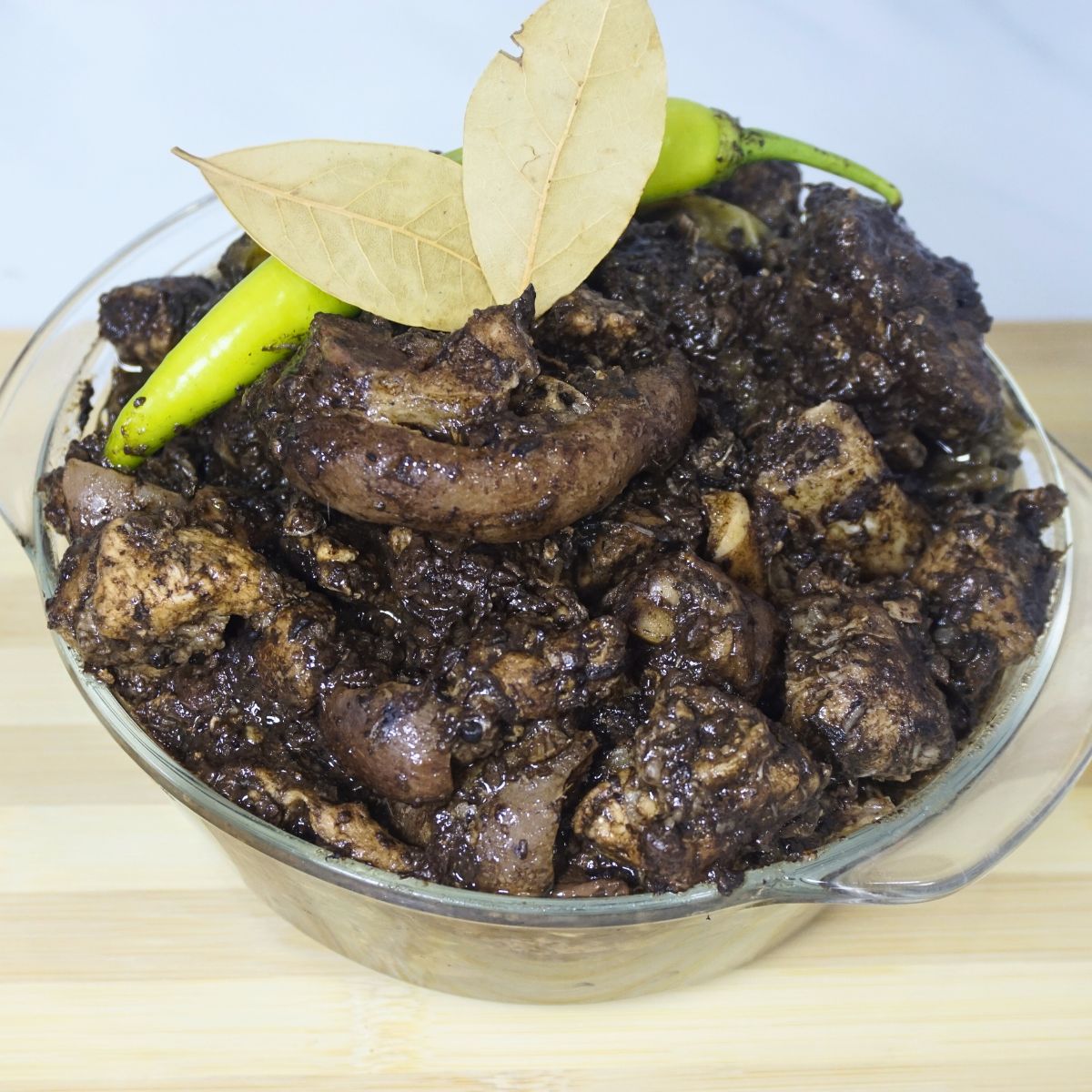
What is best paired with dinuguan?
The best pairing for Dinuguan is puto, soft and fluffy steamed rice cakes that balance the savory richness of the dish with a touch of sweetness.
If you don’t have puto, a simple serving of steamed white rice also works perfectly, helping to absorb the flavorful sauce. This is what we usually do. Some people even enjoy Dinuguan with a side of crispy fried fish or grilled meats for a nice contrast in texture and flavor.
Tips in Cooking Dinuguang Baboy
- Get fresh pork blood early: Head to the market early to ensure you get fresh pork blood. Vendors often run out later in the day, and fresh blood makes a big difference in the flavor and texture of the dish.
- Don’t stir the vinegar right away: After adding vinegar, let it simmer for a few minutes without stirring. This prevents the dish from having a raw, sour taste and lets the vinegar mellow out nicely.
- Use both pork belly and pork hock: The mix of pork belly and hock gives the dish a balance of tender meat and gelatinous texture, making every bite more flavorful.
- Simmer on low heat: Slow and steady cooking on low heat will make the pork tender and allow it to soak up all the rich flavors from the spices and pork blood.
- Adjust the spice level to your taste: If you’re not a fan of too much heat, start with a small amount of chili and taste as you go. You can always add more if you want to kick up the spice!
Frequently Asked Questions
Yes, you can substitute pork with beef, chicken, or even seafood, but the flavor will differ slightly. Pork is traditional and gives the best texture and richness to the dish.
Dinuguan can be stored in the refrigerator for up to 3 days in an airtight container. Just reheat it on the stove or microwave before serving.
Yes, Dinuguan freezes well for up to a month. Just thaw it overnight in the fridge and reheat on the stove before serving.
Yes, you can use leaner cuts of pork or trim excess fat from the meat. However, a bit of fat adds flavor and richness, so it’s good to keep some in the dish.

Dinuguan Recipe
Ingredients
- 2 tbsp Cooking Oil
- 8 cloves Garlic (minced)
- 1 piece Onion (sliced)
- 1 kilogram Pork Hock / Pata (cut into cubes)
- 500 grams Pork Belly (cut into cubes)
- 3 pieces Bay Leaves
- 1 tbsp Sangkot-sangkot / Dried Oregano
- 1 tsp Black Pepper (cracked)
- 1 cup Vinegar (adjust to your desired sourness)
- 3 pieces Green Chilies (adjust to your spice preference)
- Pork Blood (about 2 cup or more, depending on how saucy you prefer your Dinuguan)
- Salt (to taste)
Instructions
- Heat 2 tablespoons of cooking oil in a large pot over medium heat. Add the 8 minced cloves of garlic and 1 sliced onion. Sauté until the garlic turns golden brown and the onions become soft and translucent.
- Add 1 kilogram of pork hock (pata) and 500 grams of cubed pork belly to the pot. Stir occasionally, allowing the pork to cook until it lightly browns on all sides.
- Toss in the 3 pieces of bay leaves, 1 tbsp of sangkot-sangkot (dried Oregano) and 1 tsp black pepper (cracked). Stir everything together, letting the pork absorb the flavors.
- Pour in the vinegar (adjust to your taste, around 1 cup should be a good start). Do not stir at this point to avoid a raw, sour taste. Let the vinegar simmer for about 5-7 minutes, allowing the sharpness to cook off.
- Add green chilies (adjust the amount depending on your spice preference). Let everything simmer together for another 10-15 minutes, allowing the flavors to meld.
- Reduce the heat to low and cover the pot. Let the pork simmer for about 1.5 to 2 hours, or until the pork is tender and fully cooked. You may add a little water if needed to keep it from drying out.
- Once the pork is tender, slowly add the pork blood to the pot. Stir continuously to prevent the blood from coagulating. Let it boil and cook for another 10-15 minutes, stirring occasionally, until the sauce thickens.
- Finally, season the dish with salt according to your taste. Give everything a final stir, and let it simmer for another 5 minutes.
- Serve hot with steamed rice or puto (steamed rice cake) on the side. Enjoy your flavorful Pork Dinuguan!
Video
